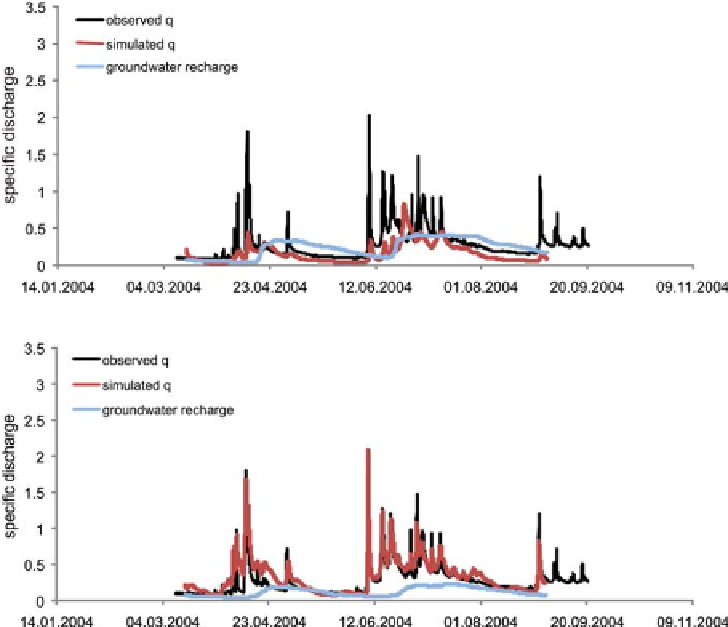Geography Reference
In-Depth Information
Figure 11.49. Simulated specific
runoff for the modelled hillslope and
measured specific runoff for the
entire catchment for a macropore
depth of 0.65 m.
Figure 11.50. Simulated specific
runoff for the modelled hillslope and
measured specific runoff for the
entire catchment for a macropore
depth of 1.3 m.
and the resulting linear models might allow for classifica-
tion of catchments with respect to runoff response. In the
case of data-scarce catchments, correct classification and
the resulting possibility of catchment inter-comparison
(especially with data-rich catchments) will improve our
understanding of runoff generation in the catchment at
hand, as well as our understanding of hydrological similar-
ity as a function of both the rainfall conditions and the bio-
physiographic setting of the landscape, such as morph-
ology, soils and vegetation cover (Blume et al.,
2007
).
This is an important point within the PUB initiative, as
catchment classification can help in the selection of appro-
priate models for predictions in ungauged catchments
(Bonell et al.,
2006
).
The use of physically based models as a platform for
hypothesis testing in combination with the multi-method
data set described above proved to be an ideal approach
for the generation and testing of process hypotheses
and thus allowed for a more in-depth understanding
of catchment functioning. Overall, the regionalisation
approach of focusing experimental work on a single
representative hillslope, and correspondingly using a
representative hillslope for the simulation of catchment
response worked well. However, it should be noted that
the studied catchment is generally quite homogeneous in
land cover and topography. In a more heterogeneous and
larger catchment this approach will need to be extended
to several hillslopes to account for different functional
units.
Acknowledgements
Thanks to all the helpers in the field and A. Iroume and
A. Huber (Universidad Austral de Chile) for logistic and
technical assistance. This work was partially funded by the
International Office of the BMBF (German Ministry for
Education and Research) and CONICYT (Comisión
Nacional de Investigación Científica y Tecnológica de
Chile) and the Potsdam Graduate School of Earth Surface
Processes, funded by the State of Brandenburg.
11.13 FREQUENCY OF RUNOFF
OCCURRENCE IN EPHEMERAL
CATCHMENTS IN FRANCE
a. crabit, f. colin and r. moussa
The issue from societal and hydrological perspectives
The population growth and associated human activities in
Mediterranean and semi-arid regions increases hydro-
logical risks. This induces more serious consequences of

Search WWH ::

Custom Search